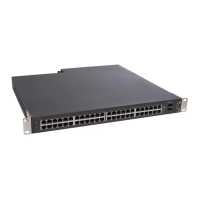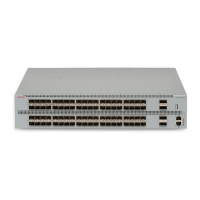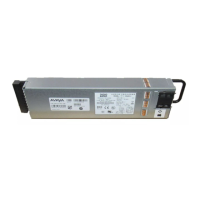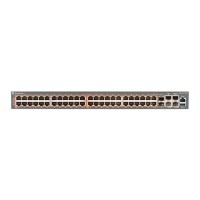For stack installation procedures, see Stack configuration on page 67.
Cascade up
In a cascade up (stack up) configuration, the base unit is physically located as the top unit in
the stack. The cable connected to the Cascade Down connector of the base unit terminates
in the Cascade Up connector physically located at the bottom of the stack. This next unit is
designated Unit 2. The stack is wired upward through the units and the system continues to
number in this manner throughout the stack. In this configuration, the base unit discovers the
stack in a cascade up (stack up) direction. The following illustration shows a cascade up (stack
up) configuration.
Figure 4: Cascade up configuration
For stack installation procedures, see Stack configuration on page 67.
Redundant cascade stacking
The 5000 Series switches allow a stack of up to eight units in a 5600 Series stack. If any single
unit fails or if a cable is accidently disconnected, other units in the stack remain operational
without interruption.
In addition to increasing bandwidth, the software uses the cables to provide two paths between
units. If one path breaks the data travels over the remaining path with half the normal inter-
switch bandwidth.
The following diagram shows an example of how a stack configuration reacts to a failed
connection in the stack configuration. In the illustrated example, the following occurs:
• Unit 3 becomes non-operational due to a unit failure, cable disconnection, or a loss of
power.
• Units 2 and 4, directly upstream and downstream from Unit 3, sense the loss of link signals
from unit 3. The software causes all the data to traverse the remaining path.
Installation fundamentals
22 Installing Avaya Ethernet Routing Switch 5000 Series December 2013
Comments? infodev@avaya.com

